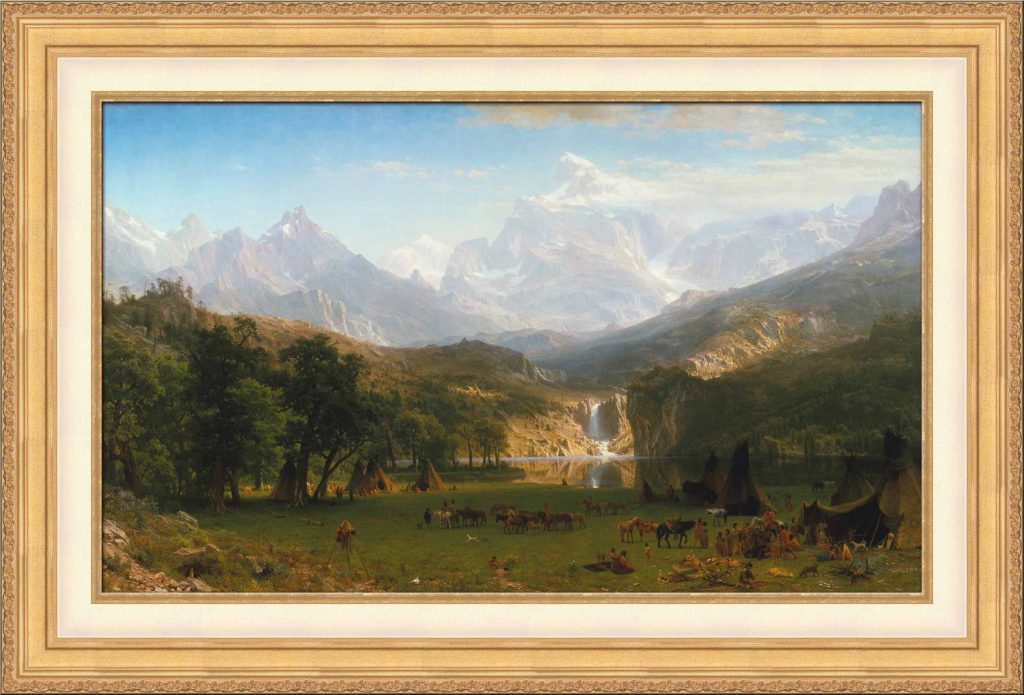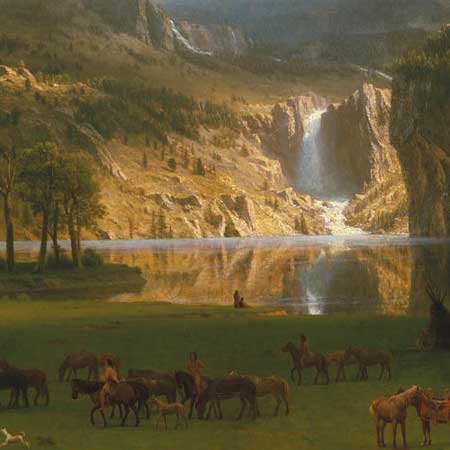
Albert Bierstadt The Rocky Mountains, Lander’s Peak
Date: 1863
Medium: Oil on Canvas
Dimensions: 186,7 x 306,7 cm (73 1/2 x 120 3/4 in.)
Location: Metropolitan Museum of Art New York
Art Movement: Hudson River School
This painting presented as Art Print on Canvas

This painting catapulted Bierstadt to national and international fame when it was exhibited at the New York Metropolitan Fair in April 1864. The purpose of the fair was to raise funds for the Sanitary Commission, the Civil War forerunner of the Red Cross. As part of the presentation, live In-dians performed various activities, including ritual dances and sporting events. The painting’s immense popularity derived from the combination of its enormous size and its depiction of the gorgeous scenery of the Rockies. In the foreground, Indians go about their business un-aware of the eavesdropping public. Behind, a transparent sheet of water reflects the enormous mountain range.
The cumulative impact must have been thrilling to the urban eastern viewer. Here was the West of fantasy, a never-never land of savages and their sublime landscape, a wonderful place to think about visiting. No other civilized country could offer the prospect of experiencing such wildnerness firsthand. On another level, this was not only a sublime landscape, but a landscape that symbolized America’s imperial destiny-as if to say that the nation possessed more beautiful mountains, more open spaces, more clear air than any other.
Composition
Compositionally, The Rocky Mountains is one of two basic types-the frontal and less common diagonal-that Bierstadt used for his larger wilderness views. Each had its own variations. This one is obviously the frontal type. The main lighted areas, in the middle and far distances, are centrally located. The Rocky Mountains is also traditionally organized in that land appears in the foreground, water in the middle distance, and mountains to the rear. Like the earlier The Marina Piccola, the painting is of the space-box type with the mountains, despite their awesome size, cutting us off from the sky. Unlike his Luminist contemporaries, Bierstadt controlled space rather than let it skip to infinity, suggesting an earthly-spiritual continuum.
The influence of photography is especially evident here: the clear foreground and misty background approximate the tonal intensities one would see in a stereograph view of such a scene. Because of the abrupt changes in tone, each major element in the painting seems to have come from a preassembled unit, thus creating a curiously static sequence of spaces.
Albert Bierstadt The Rocky Mountains, Lander’s Peak (Detail)

